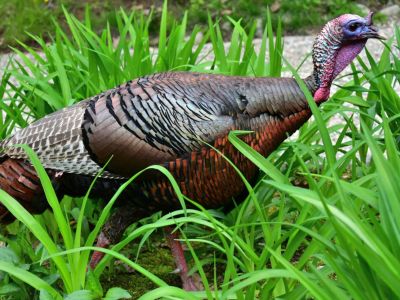Wild Turkey Control
Wild turkeys in garden areas are certainly upsetting, but before you assume that the wild turkey you saw this morning was the same one that ate your corn down to nothing, you’ve got to do a little legwork. More often than not, crop damage is caused by wildlife other than turkeys; they’re simply in the wrong place at the wrong time. Look around the damaged plants for signs of scratching or turkey-shaped footprints. If your crop attack happened after dark, you’ll know you have to look at other suspects, since turkeys roost at night. Once you’re certain that wild turkeys are the ones eating your plants, you need to think like a turkey. Deterring wild turkeys works best when you use their own nature against them. For example, scare deterrents are very effective, but only if you vary them so the turkey doesn’t detect a pattern. Managing wild turkey pests is most effective when you do these things:
Make your garden less friendly. This means keeping your lawn cut short so there’s no grass seed to feed wandering turkeys and making sure that dense bushes and other vegetation are pruned and thinned. Without adequate cover or a decent place to roost, your garden might not be as easy of a target. Remove temptation. If you’ve got a small garden, you can cover it with a wire pen or build a high fence to keep the turkeys out. Although turkeys fly, they usually won’t fly into a small fenced-in area unless they’re very hungry or the thing you fenced in is of high value to them. Harass lingering birds. Any birds that continue to hang around after you’ve made it clear they’re not welcome can be sent on their way with simple, constant harassment. Sprinklers on motion detectors, fireworks, dogs, and even shooting your rifle over their heads will eventually send these guys running, provided you use many different methods of harassment together. Pie pans and other basic noisemakers will lose their power as soon as the turkeys realize they don’t represent a real threat.
